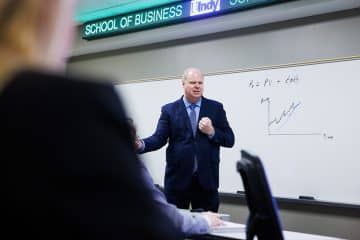As an Adult, am I Eligible for FAFSA?
As an adult who is considering going back to school, you might be wondering if you’re eligible for financial aid. Hearing “FAFSA” might conjure an image of eager teens gearing up for their first day of classes. Fear not—adult students are not left to finance their education alone! Nearly everyone who applies, regardless of age, receives some type of aid. The FAFSA is a form that determines your eligibility for federal grants, work-study programs, and loans.
Common eligibility requirements include citizenship status, a valid social security number, a high school diploma or a GED, enrollment in an eligible program, and a good standing on a federal student loan. Visit studentaid.ed for a full list of requirements.
Understanding FAFSA:
Filling out the FAFSA form can be easier than you think. The key is to be prepared and patient. Create an FSA ID so you can easily access your online application and avoid processing delays. Prepare all the necessary documents so you can easily find and fill in the important information. Remember, since you are an independent student, you will only provide your own tax return data (or your spouse’s if you are married). Completing the FAFSA does take time, but the rewards are worth it, so be patient!
Aside from general information about you (your name, date of birth, address, etc), the FAFSA also requires information about your financial situation. This information comes from your federal tax returns, including IRS W-2 information for you and your spouse. You will also be expected to provide your social security number and, if you have one, your driver’s license number.
Types of Aid
Perhaps the most confusing and intimidating aspect of the financial aid process is making sense of the types of aid offered and what they will mean in the long run. FAFSA makes it easy for you and offers three types of aid based on your eligibility: grants, work-study, and loans.
Grants are a type of financial aid that does not need to be repaid. Essentially free money, grants are an optimal way to pay for your degree. The Federal Pell Grant is the most common, but it is only available to students completing their first degree; students pursuing a master’s degree are not eligible. Your eligibility for the Pell Grant is determined by your FAFSA.
A work-study program matches you with an on-campus job in which you earn money to pay for educational expenses. Adult students who qualify are welcome to take advantage of this opportunity. If you are unable to do so because of other work or family obligations, don’t worry; there are still other ways to finance your education.
Typically, loans make up the bulk of your financial aid award. If hearing “student loans” sounds like nails on a chalkboard, you’re not alone! With student debt at an all time high, you are wise to be wary of incurring debt. Taking out loans isn’t something to take lightly, but you don’t have to be afraid of them entirely, especially if they come from the government. Your FAFSA determines your eligibility for two types of federal student loans:
- Direct Subsidized Loans: These loans are available to eligible students who are pursuing an undergraduate degree and have demonstrated financial need. Your institution will determine the amount you can borrow based on your FAFSA. The U.S. Department of Education pays the interest on this loan while you are enrolled in school at least half-time and for the first six months after you graduate.
- Direct Unsubsidized Loans: Like subsidized loans, your school will determine how much you can borrow. A key difference is that eligibility for these loans is not contingent on financial need. The most important thing to note is that you are responsible for paying the entire amount of interest on the loans.
Federal student loans are always a better idea than taking out a private loan. When the Department of Education is your lender, you can enjoy lower, fixed interest rates; deferred and flexible repayment plans; and the opportunity for loan forgiveness in certain industries.
Other Ways to Pay for School
If your financial aid package from FAFSA is not enough to cover your expenses, there are other ways to pay for your education:
- Scholarships: There are scholarships for nearly every type of student, and single parents, women, and corporate employees are highly targeted demographics. Scholarships come from a variety of sources. Whether they come from a corporation, organization, or your school, you don’t have to worry about paying them back later.
- State Initiatives: Depending on where you live, your state might have programs that can help pay for school. Some of these programs can help with such things as tuition, transportation, or child care costs.
- Military Benefits: If you have served in the military, there are several federal tuition assistance programs that you can take advantage of. Seek help from the financial aid office at your institution so they can guide you through the process of using tuition assistance.
- Child Care Benefits: Parents don’t have to choose between their education and their families. While it is a significant challenge, there are resources to help you balance your studies and the kiddos.
- Employer Benefits: Employers are becoming increasingly aware of the benefits of higher education for their employees and, ultimately, their businesses. Sending their star employees back to school to gain new skills is a worthwhile investment. Check with your employer to see if your company participates in employer tuition assistance.
More About Abound: We’re here to help. Abound: MBA narrows down your options and gets you in touch with schools that we can confirm are Accessible, Affordable, Accelerated, and Advanced. Take a look at the schools we trust and find the program that works for you.






